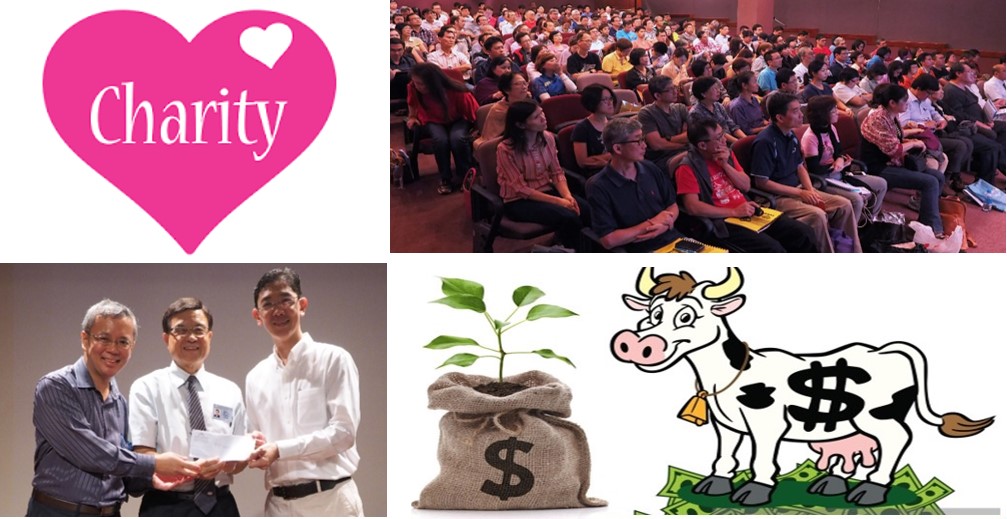
Dr Tee, Ein55 Mentor & Graduates have together organised 6 charity investment courses (REITs/Business Trusts in Nov 2015 and May 2017, High Dividend Stocks in Mar 2016 and Oct 2017, Discounted NAV Stocks in Sep 2016, and Capital Growth Stocks in Apr 2018) in the past 3 years, donating net income of around $110,000 to Tzu Chi 慈济 (Singapore). We hope to inspire more Ein55 Graduates to reach out the society, helping others who are in need. More importantly, they have also learned the secrets of making money through investment. When more Ein55 Graduates are successful financially, they could also contribute back to the society to help more people in future.
Here are key learning points from the recent Charity Course on Capital Growth Stocks:
1) Two approaches in investing for Capital Growth
– Asset Base approach – buy base on margin of safety via calculate it’s “Discounted” NAV of all present assets
– Earning-Cash flow approach – buy base on margin of safety via calculate it’s Intrinsic value using “Discounted Cash Flow” of future cash flow.
2) Discounted Cash Flow (DCF) model is the most common method to calculate Intrinsic value of a growing company, using future cash flow projections and discounts them using an expected annual rate to arrive to present value.
3) An economic moat is a structural business characteristic that allows a company to generate excess economic returns for an extended period. It protects a company’s profit from being attacked by business forces. Traditional management theory terms as “Sustainable or Durable Competitive Advantages” or simplify terms as “Entry Barriers”.
4) A company with economic moats able to generate higher level of Economic Profit compare to its peers and can sustain competitive advantage for a long period of time. Economic moats drive value creation that leads to revenue growth, high profitability and high return on invested capital. The free cash flow accumulated create economic profit, this is the real value creation company.
5) Here are 3 Steps in Stock Investing:-
– Identify businesses that can generate above-average profits for many years
– Wait until the shares price trade below their intrinsic value, and then buy
– Hold those shares until either the business deteriorates, or the shares become overvalued, or a better investment is found.
We should drive the money (helping others when you are successful), not driven by the money (making money only for own gain). Investors should learn the unique Optimism Strategies with FA (Fundamental Analysis) + TA (Technical Analysis) + PA (Personal Analysis) developed by Dr Tee to choose strong global stocks, buying them at low price, then holding for consistent dividend payout or selling for high capital gains. High-quality free stock investment courses are provided by Dr Tee to the public.


